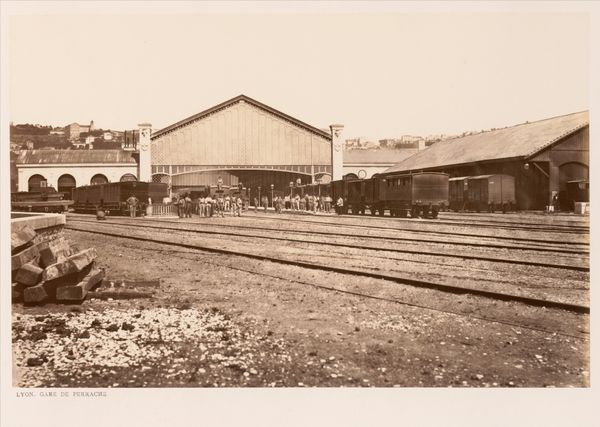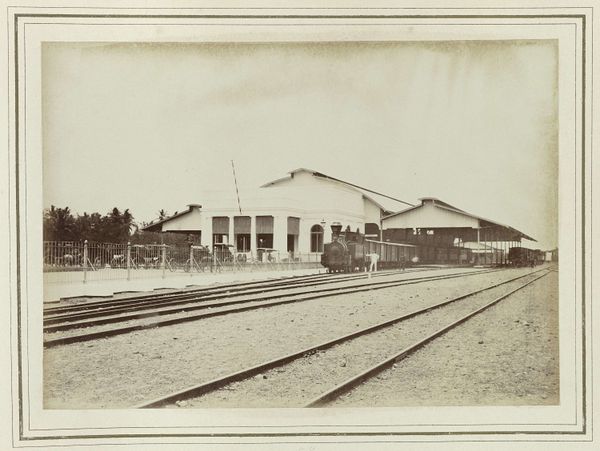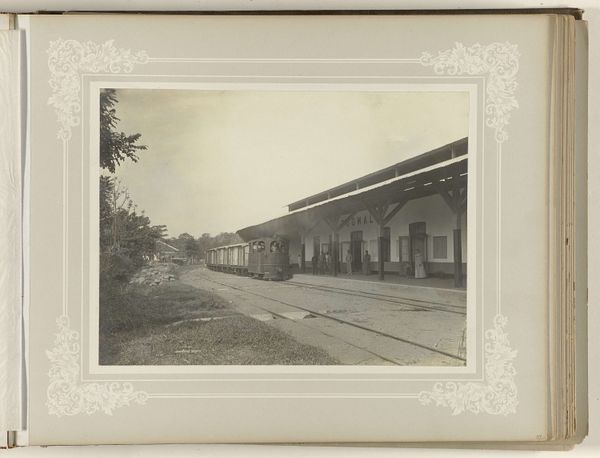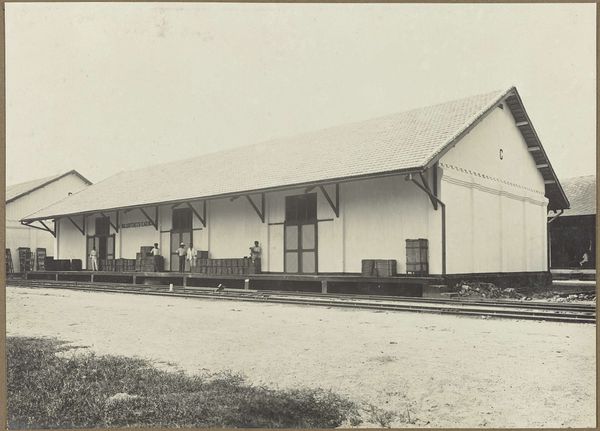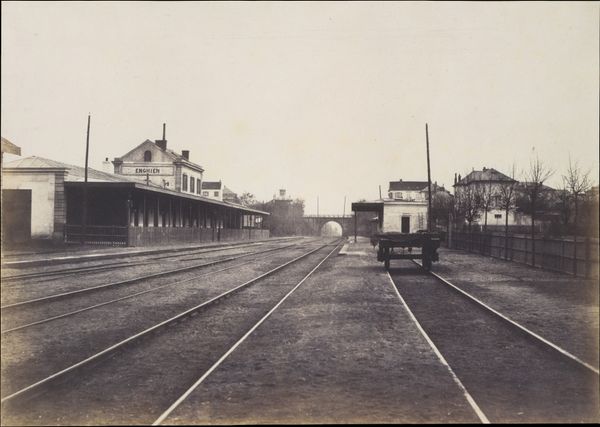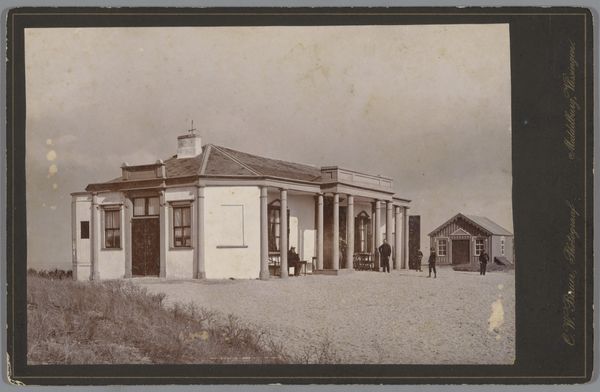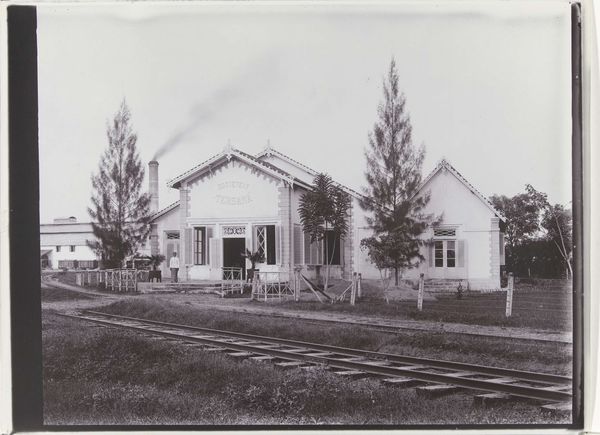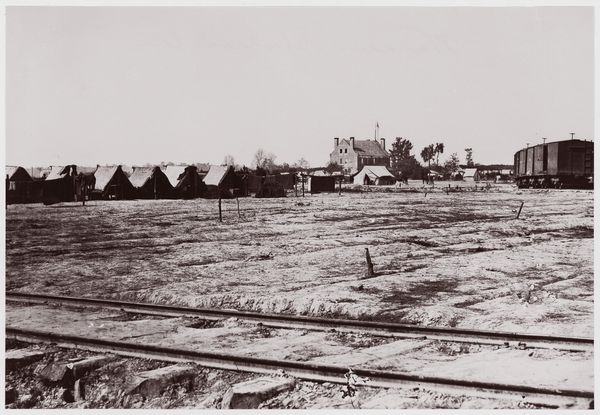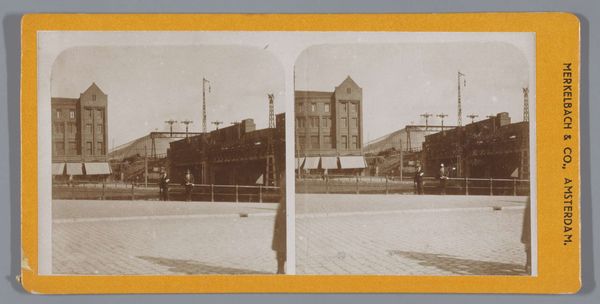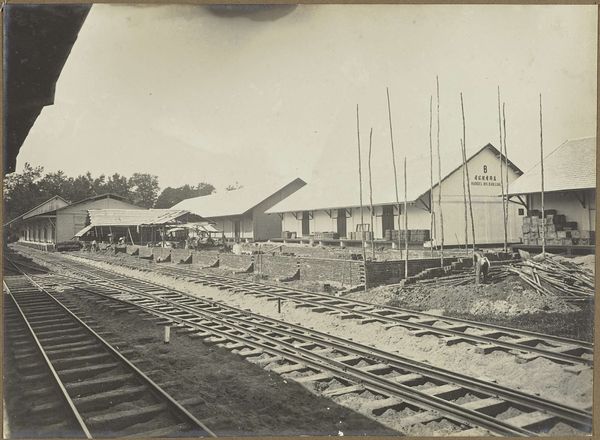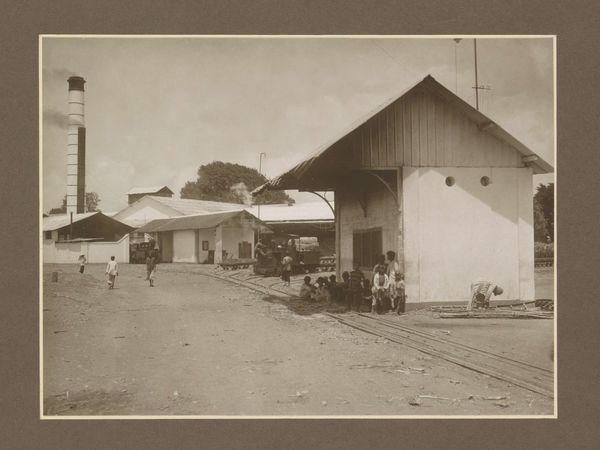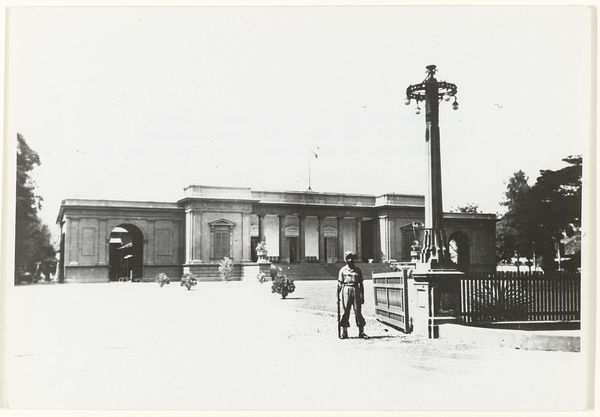
print, daguerreotype, photography, site-specific
# print
#
landscape
#
daguerreotype
#
photography
#
site-specific
#
cityscape
#
realism
Dimensions: Image: 30.7 x 43.6 cm (12 1/16 x 17 3/16 in.) Mount: 46 x 60.5 cm (18 1/8 x 23 13/16 in.)
Copyright: Public Domain
Curator: Edouard Baldus captured this compelling cityscape, titled "Toulon," between 1860 and 1862. The Realist photograph presents the train station in Toulon. Editor: The photograph, realized as a print, certainly speaks of scale, doesn’t it? The linear convergence and limited tonality contribute to the depot’s immensity, yet there’s a somber, almost industrial mood, which I see coming from the heavy masses of railway sleepers that recede in the foreground, and the weight of what might lie beyond. Curator: And yet, look closely at the structural context within France. Railroads were rapidly expanding and their construction and usage reshaped industrial networks. As we understand more, Baldus’ images reflected and shaped this narrative, both recording progress and tacitly celebrating technological advancements made during the era. These photographs aren't simply records; they actively participated in promoting industrial expansion, specifically with regards to the materials used at that time in Toulon’s social economy and how the rails influenced labor. Editor: True. Note, too, Baldus' expert balance, for it isn’t just a dry record. He draws out a very tangible atmosphere. The composition leads us through the solid foreground of railway, the liminal space inside the canopy where you get a glimpse into more distant objects, and up to the imposing architecture, which, with its symmetry and design and careful attention to brickwork, creates a structured order from which the other details emerge. There is much to examine in the photograph’s inherent qualities. Curator: Absolutely. This kind of infrastructure dramatically changed daily life and commerce in Toulon and the surrounding regions. Consider who had access to it, what goods were transported, and how existing power dynamics were either reinforced or challenged through the development of this railway—such aspects invite critical thought regarding infrastructure projects of the period. Editor: His ability to present these advances with attention to texture, spatial arrangements, and controlled light brings those economic concerns to life. Curator: It’s about the tangible effect of capital, of access to transportation of resources, both in the construction of the railways and in the ability to connect communities together using available technological progress, at an economic inflection point in history. Editor: Exactly. A detailed exploration of an emergent age—with Baldus attending carefully to tonal value, and his masterful depiction of shape and space. It is as informative and evocative.
Comments
No comments
Be the first to comment and join the conversation on the ultimate creative platform.
